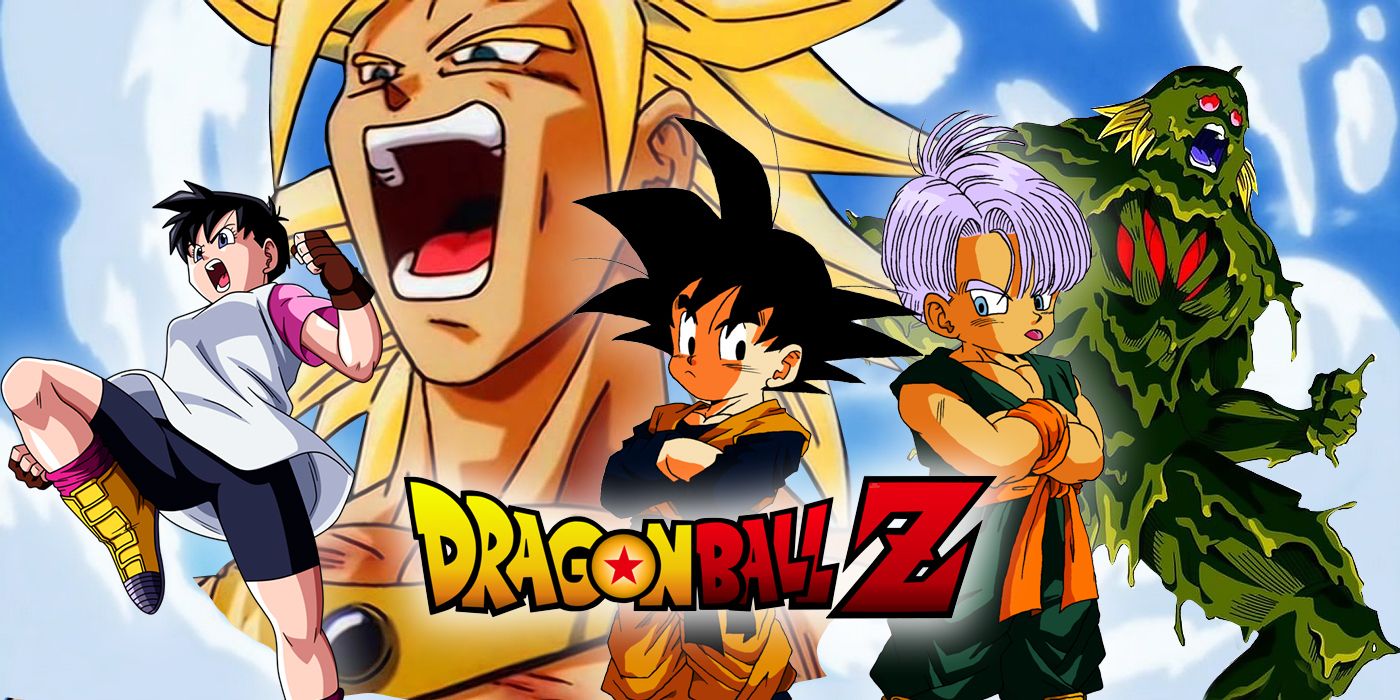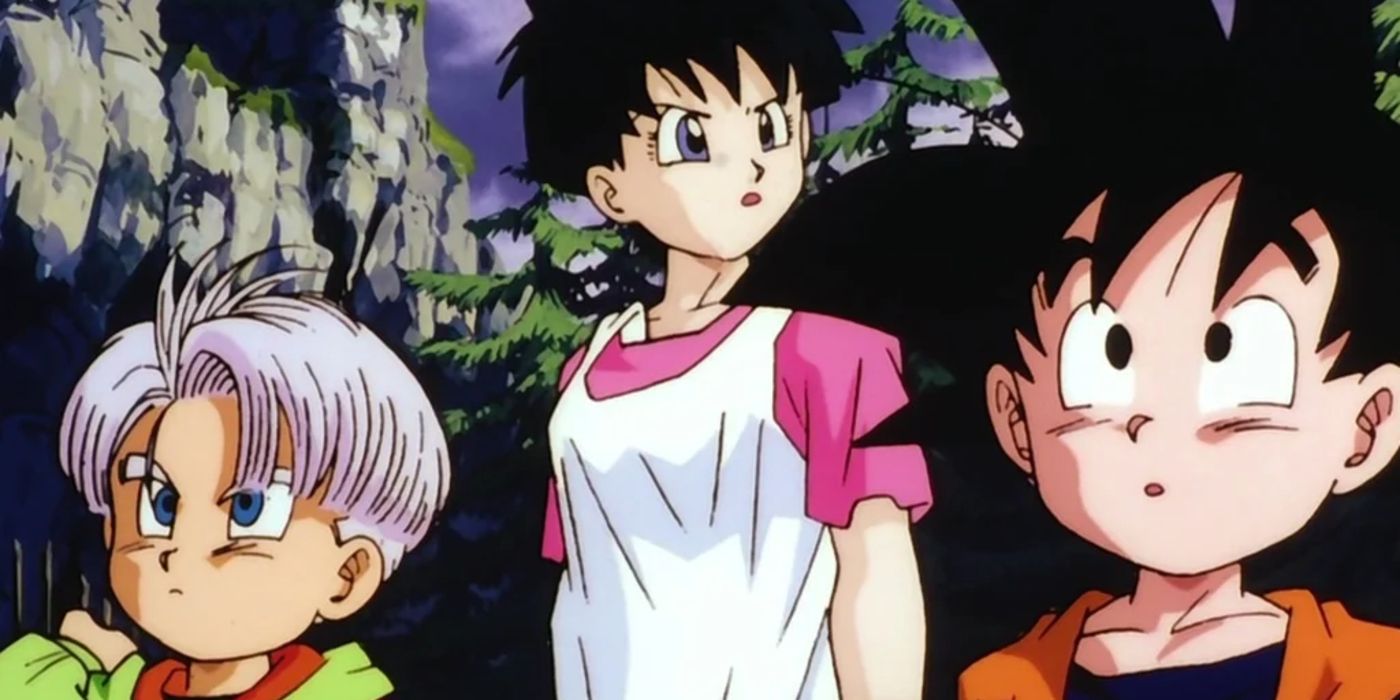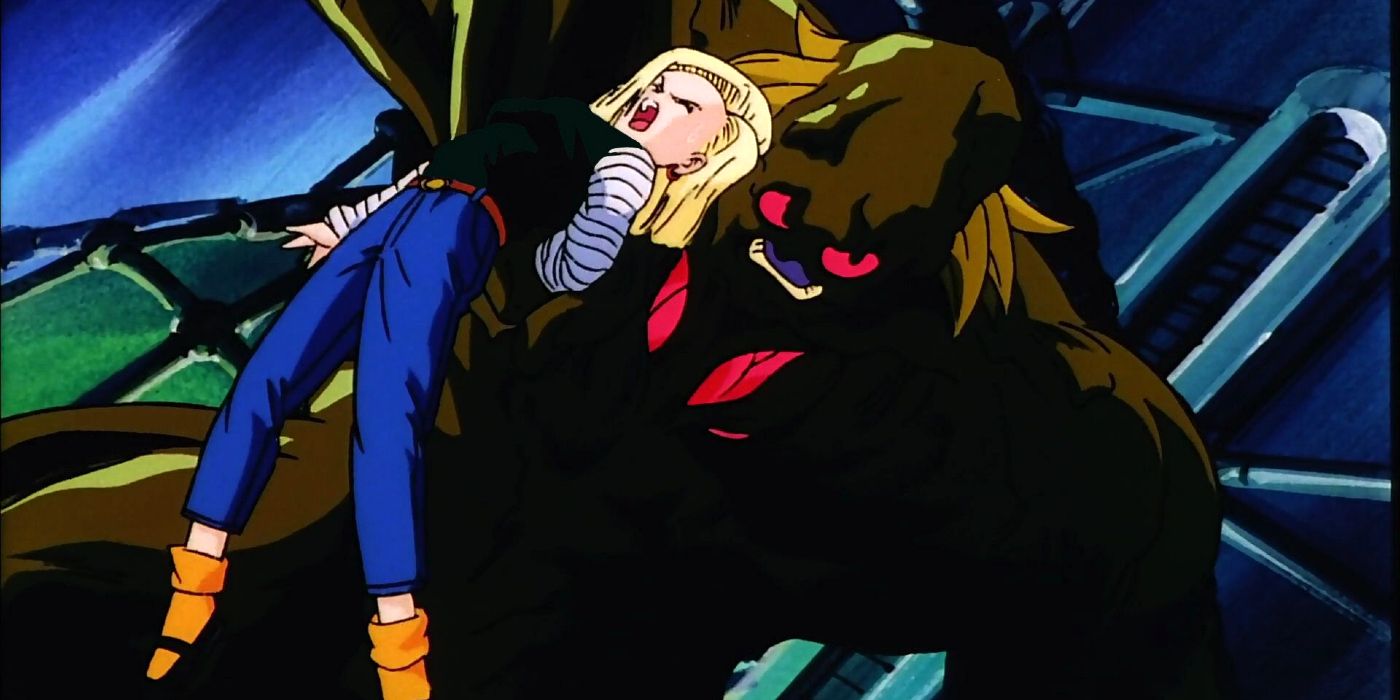He’s big. He’s bad. He’s blonde…well, greenish blonde. He’s the battling bruiser, the titanic terror, the sinister Super Saiyan, the legendary – okay, you get the idea. He’s Broly, a uniquely powerful Saiyan warrior with his own transformation and a blood feud with series star Goku, and he’s easily the most notorious villain to come out of the original 13 Dragon Ball Z movies produced between 1989 and 1995. Created by series writer Takao Koyama, Broly debuted in the film known in the English-speaking world as Broly – The Legendary Super Saiyan in 1993. It was the longest of the Dragon Ball films at that time, a distinction currently held by Dragon Ball Super: Broly, the latest film in the franchise and a reboot designed to fit Broly’s character into the series’ continuity (the original film, like all of the original 13, was set outside it). These two movies are among the most popular with Dragon Ball fans, with the latest Broly movie taking in record box office and garnering critical acclaim.
But of the four Dragon Ball films that feature Broly, half of them are in fans’ bad graces. The tenth and eleventh Dragon Ball Z movies, Broly – Second Coming and Bio-Broly, are consistently rated as among the worst films in the entire franchise. Many fans don’t like the way both films open with a lengthy showcase for the antics of two child characters. They don’t like the quality of the animation. And they don’t like the devolution of Broly - not the most intelligent and eloquent character to begin with - into a monosyllabic meathead through these two movies.
I can agree with that last critique, in a way; Broly is the weakest link in both movies. The most interesting things about him were his grudge against Goku and his backstory, which was told in the first film. Without those two things going for him, there's not much to Broly beyond muscles and mayhem. When he finally shows up in both of his sequel films, the story devolves into mindless, uninteresting fight choreography. But to judge these movies solely on Broly’s fights is to disregard those extended opening sequences that are the very reason these movies deserve a second chance.
The original 13 Dragon Ball Z movies were produced concurrently with the anime, which was adapted from the original manga by Akira Toriyama while the manga was still in progress. Broly – Second Coming and Bio-Broly were made when the series was in the middle of the Majin Buu arc, the final storyline of the Dragon Ball manga and Dragon Ball Z. The arc began as the biggest shake-up to the series in years. Toriyama had killed off Goku in the previous arc and intended to make his son Gohan the new protagonist. The cover art for the first volume in the arc also announced “The New Generation,” featuring not only a teenage Gohan, but his younger brother Goten, Goten’s best friend Trunks, and Gohan’s high school girlfriend Videl. The anime leaned heavily into this development in adaptation with a new title song and new opening credits centered around Gohan, his growth over the years, and his new status as older brother, high school student, and costumed superhero.
The shake-up wouldn’t last. In an interview after the manga was finished, Toriyama admitted, “I intended to put Gohan into the leading role. It didn’t work out. I felt that compared to Goku, he was ultimately not suited for the part.” When and why exactly Toriyama came to that conclusion isn’t clear, but the back half of the Majin Buu arc abruptly returns Goku to the spotlight after expending considerable time setting Gohan, Goten, and Trunks up as pivotal to victory. They all end up sidelined as Goku, helped by his longtime rival Vegeta, defeats Majin Buu and cements himself and Vegeta as the leads of Dragon Ball, a role they continue to hold to this day.
But that about-face hadn’t happened at the time the second and third Broly films were made. Broly – Second Coming opens with a hunt for the series’ titular dragon balls, carried out by Goten, Trunks, and Videl. Their hunt is done for the fun of it, and it takes them to a village where a charlatan shaman has convinced the locals to sacrifice girls to a dinosaur. They get in a lighthearted tussle with the dino before Broly turns up, having survived his defeat in the last movie and come crashing to Earth in a spaceship before being frozen in mountain ice (Dragon Ball isn’t the franchise for logic). When he wakes up and gets to fighting, Gohan enters the scene to help his friends. He and Videl sit out Bio-Broly altogether, which opens with Goten and Trunks following along on an effort to collect a debt. This leads to a series of events culminating in an island laboratory, where a clone of Broly made from the original Broly's blood recovered by the disgraced shaman from the last film is horribly mutated into fighting sludge (again – not the place for logic).
The conflict with the titular villain begins quickly in the Majin Buu arc, and Goku reenters the picture well before he resumes his role as the series' protagonist. Consequently, there isn't much time given to Gohan and the new generation of characters on their own. The Dragon Ball Z movies, and new material added to the anime (sometimes dismissed as “filler”), were an opportunity to expand on the little time that new generation had to shine and take these new and newly promoted characters into different types of stories and settings. In doing so, the anime even created parallels and contrasts with earlier arcs in the series.
This is especially apparent in the first half of Second Coming. Hunting for the dragon balls was at the heart of the first storyline of the series, but by the Majin Buu arc, it had become such an effortless task that it could be played as a lark. The first quest for the balls took a young Goku and his friends to myriad locations, including a village beset by what seems to be a monster stealing away the village girls; over time, nearly every main character grew so powerful that such a conflict could be reduced to a series of quick gags, as it is in Second Coming. But aside from serving as a lighthearted callback to days gone by, this opening sequence lets the new generation of characters play off one another for a good 20 minutes without an ongoing narrative to interfere with their rapport. Videl, Goten, and Trunks almost never interact in the manga or the anime, but the movie turns them into an off-balance trio, with the teenaged Videl acting as a frustrated babysitter to two immature, impatient, superpowered kids whose idea of an afternoon out is to punch dinosaurs while collecting mystical wish-granting jewels.
Bio-Broly doesn’t offer any callbacks to the early roots of Dragon Ball, but its opening scenes once again offer the newest cast members a chance to play around, and to explore new dynamics with established characters. The person Goten and Trunks tag along with is Android 18, who never directly interacts with them in the series, and when it comes time to face Broly's clone, they team up with 18’s husband and Goku’s best friend, Krillin. They don’t interact as much as Videl and the boys did in the previous film, but 18 gets a good run of time to intimidate and blackmail the buffoonish Mr. Satan, Videl’s father. In both films, Broly’s entrance derails these sorts of character interactions, taking the films into the standard action sequences full of screaming, power-up transformations, and brutality that has become the surface-level signature of Dragon Ball. But while Second Coming couldn’t resist finding a loophole for the still-dead Goku to assist in securing the win, Bio-Broly lets the kids (and Krillin) do the deed all by themselves.
Neither film shows Gohan at his best, even at a time when he was still meant to be the series lead. Still, for those fans who liked the idea of the torch being passed to a new generation and found Goku’s return a disappointing setback, Second Coming and Bio-Broly offer a charming if fleeting glimpse at what might have been: a chance to showcase new personalities, new group dynamics, and a new look at the core of Dragon Ball.



